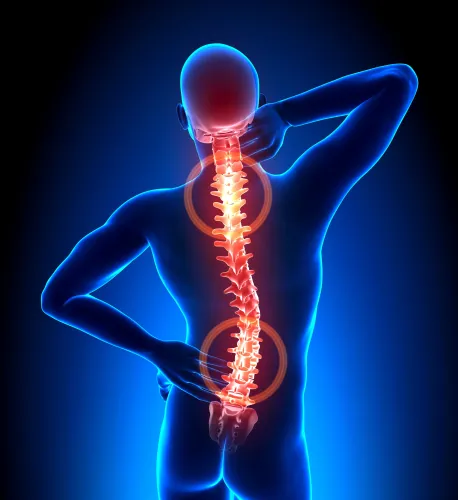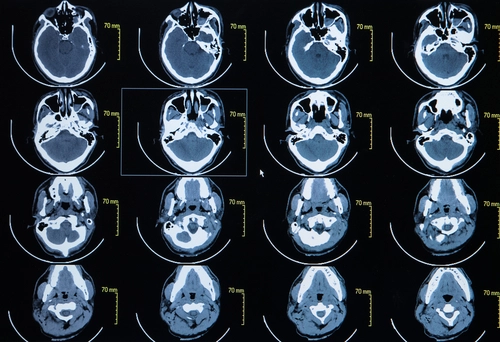Radiology Coding Alert
Master Modifiers in Your Radiology Coding By Asking These Questions
Find out what counts for increased procedural services. Even though CPT® codes have highly detailed descriptors and specific guidelines, sometimes it’s hard to accurately report radiology procedures to ensure your practice gets reimbursed. But you can use modifiers to convey what happened during a procedure without changing the definition of the code. However, correctly using some modifiers with your radiology billing claims may be more confusing than finding the appropriate CPT® code. Check out these three frequently asked questions to firm up your modifier coding skills. FAQ 1: Can You Use Modifier 59 to Unbundle Any Radiology Procedure or Service? Modifier 59 (Distinct Procedural Service) is arguably one of the more confusing modifiers to append to your CPT® or HCPCS codes. “According to CMS, modifier 59 is the most used and most commonly abused modifier. It’s important to remember that just because National Correct Coding Institute (NCCI) edit pairs allow for a modifier to be used, it does not mean it is appropriate to use the modifier. Documentation has to support the medical necessity and the definition of the use,” says Peggy A. Stilley, CPC, CPB, CPMA, CPC-I, COBGC, Senior Education Specialist for the AAPC. While modifier 59 should not reduce your reimbursement, its use will depend on your documentation. Scenario: A 55-year-old female patient returns to your radiology practice for a breast ultrasound after screening mammography and diagnostic mammography exams a week before discovered an abnormality. After further examination of the breast ultrasound results, the patient’s oncologist orders a fine needle aspiration (FNA) biopsy with ultrasound guidance to diagnose the abnormality. For this visit, you’ll use 76641 (Ultrasound, breast, unilateral, real time with image documentation, including axilla when performed; complete) to code the breast ultrasound. You’ll use 10005 (Fine needle aspiration biopsy, including ultrasound guidance; first lesion) to document the fine needle aspiration biopsy, and you’ll code the ultrasound guidance procedure with 76942 (Ultrasonic guidance for needle placement (eg, biopsy, aspiration, injection, localization device), imaging supervision and interpretation). Additionally, you’ll append 76942 with modifier 59. In the code pairing of 10005 and 76942, the NCCI lists 76942 as a column 2 code, and the edit has a modifier indicator of “1,” meaning that the pair can be unbundled. X{EPSU} modifier note: You should check individual payer guidelines for the correct way to bill in this situation, as it’s possible that some private insurers and Medicare or Medicaid carriers could deny the claim. In this scenario, you may need to append one of Medicare’s X{EPSU} modifiers instead, like XU (Unusual non-overlapping service…) on 76942. FAQ 2: Do You Need to Use Modifier 52 for an Incomplete Procedure? For a physician to designate a procedure code as a reduction in services, the circumstances need to be very specific. According to the guidelines in Appendix A of the CPT® manual, “a service or procedure is partially reduced or eliminated at the discretion of the physician or other qualified health care professional.” This means that you can append an appropriate CPT® code with modifier 52 (Reduced Services) to show that the entire procedure attached to the code was not fully performed. Scenario: Your radiology practice sees a patient presenting with symptoms of right foot pain. The radiologist performs X-rays of the foot to check for a closed fracture. They capture top and side views of the foot and issue a diagnosis of a closed right foot fracture (S92.811A Other fracture of right foot, initial encounter for closed fracture). When you’re coding this visit, you will use CPT® code 73630 (Radiologic examination, foot; complete, minimum of 3 views) and append it with modifier 52. That’s because the code descriptor calls out a “minimum of 3 views,” and in this scenario, the radiologist captured only 2 views. Here’s why: “[Modifier 52 is] one [modifier] where the code still qualifies, but a portion of the procedure was not completed for some reason. The modifier is not used for an incomplete procedure, but for instances where less than the entire procedure was performed,” Stilley says. For example, if the radiologist performed a CT of the lower leg without contrast material, you couldn’t report 73701 (Computed tomography, lower extremity; with contrast material(s)) with the modifier because 73700 (…; without contrast material) accurately represents the procedure. FAQ 3: What is Meant By “Increased Procedural Services” for Modifier 22? Modifier 22 can come across as a tricky modifier to use. The wording in the guidelines isn’t as cut and dry as adding another procedure or performing additional tasks, but with some digging, you can find out how to accurately append your applicable CPT® codes with modifier 22. Scenario: Your practice sees a patient complaining of acute abdominal pain. The patient’s primary care physician (PCP) ordered an abdominal ultrasound to assess the organs and structures within the abdomen. The patient’s BMI is 45, which classifies them as morbidly obese, and their physical condition requires additional physical effort from the radiologist to assist the patient onto the examination table. The radiologist performs the abdominal ultrasound with real-time image documentation over the patient’s abdomen and reports their findings. For this scenario, you will use 76700 (Ultrasound, abdominal, real time with image documentation; complete) to document the abdominal ultrasound. The radiologist wrote in their report the procedure they performed as well as the patient’s morbid obesity, and because of the latter, you’re able to append the CPT® code with modifier 22. The guidelines for modifier 22 in Appendix A indicate that additional work can include “increased intensity, time, technical difficulty of procedure, severity of patient’s condition, physical and mental effort required.” A patient who is morbidly obese can cause the physician to exert greater physical effort to deliver care, but the physician must have documentation to “support the substantial additional work” to append the CPT® code with modifier 22. Without this documentation, your claim could come back as a denial.

Related Articles
Radiology Coding Alert
- CPT® 2022 Update:
5 Radiology Changes Include New Trabecular Bone Score, Thermal Nerve Destruction Codes
Plus: You’ll discover three deleted CPT® codes in 2022. You may be getting used to [...] - Coding Quiz:
Show Off Your Radiology Exam Coding Skills with These 3 Scenarios
Think you know the difference between a lower leg and a joint MRI? Several kinds [...] - FAQs:
Master Modifiers in Your Radiology Coding By Asking These Questions
Find out what counts for increased procedural services. Even though CPT® codes have highly detailed [...] - Coding Quiz Answers:
Check Your Answers to Our Radiology Exam Coding Quiz
How well do you know the radiology CPT® codes? After you’ve answered the quiz questions [...] - You Be the Coder:
Pay Attention to the 7th Character When Reporting a Bruised Thorax
Question: A patient came into our after-hours care facility presenting symptoms of pain in their [...] - Reader Questions:
Pinpoint the Correct X-ray Code for Finger Fractures
Question: A patient visited our radiology practice complaining of finger pain in the right hand. [...] - Reader Questions:
Understand Ultrasound Guidelines to Prevent Denials
Question: A patient came into our radiology practice for her 1st ultrasound (US) after finding [...] - Reader Questions:
Combine CPT® Codes Carefully for CT Cystography Billing
Question: I’m new to radiology coding, and I have an op note documenting a CT [...]




